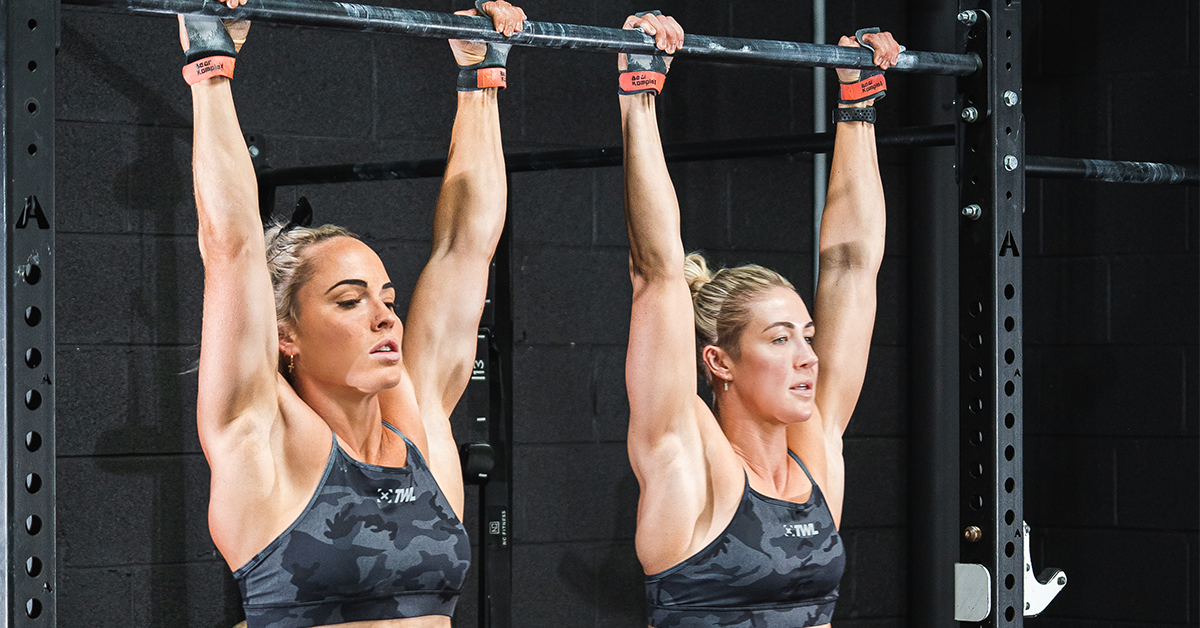You own burpees. You have successfully finished 17.1 — arguably one of the hardest Open workouts of all time — in under the time cap. Double-under WODs no longer leave you covered in whip marks. But there is one movement that doesn’t seem to be getting any easier: the strict pull-up.
Although there are some people (who are probably part-god, part-swan) who can string together strict pull-ups with all the grace of a nightingale, a lot of athletes cannot. This is partly because it’s something that isn’t often programmed. But mostly it’s because, according to Allison Warner, CF-L1 coach at ICE NYC in Manhattan, “it takes a tremendous amount of strength to pull one’s body weight over the bar with no momentum. The heavier you are (regardless of whether that is muscle or fat), the harder it is to pull your chin over the bar.”
As tough as it is, aside from the cool factor of being able to do a pull-up, there are lots of reasons why getting a strict pull-up is a good goal: “Pulling strength is important for overall strength, better posture, joint stability, functional movement, aesthetics, and confidence,” said Warner.
View this post on Instagram
So what can you do to start working toward this goal? “You have to strengthen and prep the muscles in a strict pull-up. There are lots — it’s usually considered a full-body movement. But the key players are lats, deltoids, biceps, rhomboids, teres major, forearms, abs, and hip flexors,” Warner explained. Abs and hip flexors? Yep! When the strict pull-up is executed correctly, it’s done in a hollow position, which means that it’s a core exercise, too.
But beyond strengthening those muscles, Warner said that you need to master the mechanics of the pull-up. Below she shares the top three drills for strengthening the required muscles while simultaneously working on technique.
The Top 3 Drills for Getting Strict Pull-ups
1. Dead Hang
The dead hang is an incredibly simple drill, but it’s an important first step in developing the prerequisite strict pull-up strength, according to Warner. Plus, it will help you develop your grip strength. One study has shown that it’s a good indicator of the overall predictors of overall strength.
Ready to try? The first step (surprise!) is to grab the bar with both hands. Your palms should be facing away from you with your hands about shoulder-width apart. If the pull-up bar is too tall for you to reach from the ground or you don’t feel comfortable jumping up to meet it, start standing on a bench or box so you can properly position your hands.
In position? Now it’s time to hang. This means that your feet are no longer on the floor, bench, or box but instead are dangling mid-air. Now, pull your shoulder blades back and engage your core so that you’re not swinging all over the place. That’s it. Now, accumulate as much time as you can hanging from the bar.
“This dead hang is considered an isometric hold, which will help you get used to resisting gravity while also giving you the tools to develop strength, joint stability, and grip strength,” said Warner. Want to make it more challenging? Warner suggests holding on to a wider bar (or using things like these Axel Grips), hanging from a towel with one arm, or hanging from a rope.
2. Segmented Scap Pull-Up
This is a great drill and builds off of the dead hang while strengthening the bottom portion of your strict pull-up, allowing you to get out of the “hole.”
Start in a dead hang. Now, keeping your arms straight and push down on the bar with your palms. This will engage your scapulas while simultaneously activating your back and shoulder musculature.
You should feel your body raising slightly toward the bar as if you are doing a mini pull-up. Hold this “flexed” top position for one to two seconds. Then lower back down. Aim for 10 to 15 reps.
“I like this one because it adds a dynamic component of trying to pull but allows the athlete to continue to build off of strong positioning that they work with the dead hang lats (engaged, core tight),” said Warner. This will also help open up your shoulders if your shoulder mobility is limited.
3. Deficit Pull-Up
“Even more than segmented pull-ups, I LOVE pull-up negatives,” said Warner. Pull-up negatives, which are also referred to as deficit pull-ups, are basically the opposite of a segmented scap pull-up. Instead of pulling yourself up, you are lowering yourself down. “Even if you cannot pull yourself up, you can lower yourself down — this is known as an eccentric motion, which builds up strength and confidence.”
To try one, you have to first get into the “top” portion of the pull-up with your chin over the bar. Either stand on a box that’s high enough to get you there or jump into the top of a pull-up position. Then lower yourself as slowly as possible to a dead hang position.
First, try lowering on a count of three. Then slow it down even more. “This slow tempo helps build control while moving against gravity.” Remember: The key here is quality, not quantity. That’s why Warner recommends doing them as accessory work as opposed to doing them in the middle of a timed WOD.
Grip and Hand Care
While you want to build up a little bit of tough skin so that your hands can handle the wear and tear involved with pull-ups, eventually, it might get to be too much. This will particularly be the case as you move from strict pull-ups to kipping to butterfly, and eventually, bar muscle-ups and ring muscle-ups.
Having a quality pair of grips that you can rely on will come in handy. They simultaneously protect your hands from rips and tears and also make it easier to hang on to the bar. There are a number to choose from, but you can’t go wrong with JAW. We love these because they extend a little more to the outsides of your hands. Plus, they’re super durable, so they can withstand sweat, friction, and rubbing, all without getting in between you and the bar.

Need more guidance on pull-ups? Fill out the form below to get our free strict pull-up programming.













